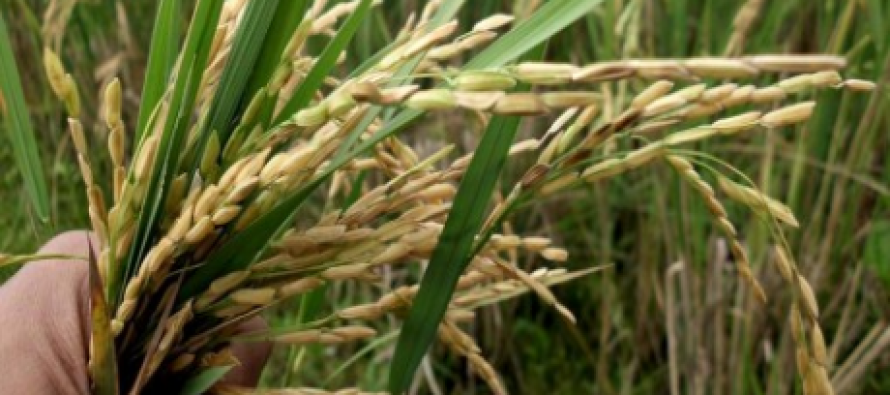Saving the rice of Bangladesh from extinction; it is 11th hour

From the foothills of the Himalayas to the shores of Sundarbans and the beaches of Teknaaf is situated one of worlds pre-eminent rice region. In this lush green land, that we call Bangladesh, wild grass slowly evolved and became thousands of varieties of rice, probably 10,000-20,000 years ago. In the hills of Mymensingh, Haors and uplands of greater Sylhet, tribal Jhum cultivations of Khagrachhari, fertile legendary soil of Barisal, the Barendra land of Dinajpur and Rangpur, salty marshlands of Khulna, indeed every region of Bangladesh has been a gigantic laboratory for the evolution and cultivation of rice. Many estimates at the beginning of the last century put this number to 20,000 varieties, consisting of Aoosh, Aman and Boro.
Today most of this rice face certain extinction unless something is done quickly to recover and save them for posterity, or even better, create arrangements so that they can keep growing. This point was driven home to me and my colleagues, when we discovered that one of our almost extinct rice, Kasalath, is being described as “indian wild rice” in international press; the scientific importance, fame, and branding being denied to Bangladesh. Although the very name Aoosh (Aus), derived from the word Ashoo or early, is manifestly bangla, Aus rice is now being claimed by others, because it has emerged as the most important rice group in the world. Other Bangladeshi Aoosh rice, such as Dular, Aus257 (IRRI germplasm name) are being utilised in international scientific journals without ever describing that they are from Bangladesh. Thousands of other varieties painstakingly now cultivated by poor farmers in very small amount of land in Bangladesh, face certain extinction.
There are very important reasons why we must save these rice urgently, and why Bangladeshis should play an important role in saving them.
1. These varieties are part of our being, our very heritage. They carry in them the imprint of our soil, and water, the heat of our seasons. Once they become extinct from earth, we are deprived of an important part of our heritage. Our forefathers loved them so much that they gave each one of them an unique name, often a poetic name (e.g, shamudrafena, radhunipagal, badshavog, Bashmati, chinigura, Badal, Rataboro, Narangi, Begunbichi etc)
2. Modern science has now discovered that these rice varierties, particularly the Aoosh (Aus) group carry in them special information (genes) allowing them to grow in stressful conditions such as high salt, flood, poor soil, etc. Such genes are not present in rice from other regions. Kasalath is a good example of that. Through thousands of years of evolution in stress conditions they have obtained this quality and our ancient farmers have selected them for these improved traits. Today because of these qualities this group of rice is highly valued by modern science.
3. This work is a clear-cut defined one that can be done. Bangladeshis, particularly expatriate Bangladeshis often want to do something defined and clear-cut for the country. Our own work on the recovery of almost-extinct Kasalath showed that although difficult it can still be done. But time is running out for us.
4. Four thousands of years growth of these rice allowed newer varieties to evolve by cross-breeding. If these rice varieties are allowed to grow even in a very small area (called ex-situ) they can be maintained in proper biological context and contribute to the evolution of newer varieties.
It is ineed 11th hour for this work as clock ticks for the doomsday. Out of 20,000 varietes of rice maybe only 20 now grows on 99% of our land. It is as though we have lost all the books of our literature for ever and are now left with only 20 books !
In the coming days we will launch a major effort to collect all Bangladeshi almost-extinct rice, now growing in very small amounts of land in outlying villages, and set in motion a process to organise their recovery in targeted villages, and then their continuous growth in small parcel of land of our 87,000 villages. Estimates vary, but many think that upto 10,000 varieties can still be salvaged. 12,000 varieties were catalogued (but not collected) in early 1980’s and our preliminary survey suggests that with painstaking efforts it will be still possible to rescue most of it.
Because of these rice variety’s life history of survival, their qualities grain length, aroma, their utility in making muri, khai, payesh and such delicacies, every variety has value and has been valued for thousands of years. Indeed the whole definition of timeless Bangalee nationhood has been tied with these rice varieties.
They also have value because they carry in them scientific information to survive in adverse conditions, so important for the challenges of climate change. With these rice varieties in hand Bangladesh can claim a place of eminence in world science.
Individual Bangladeshis, whether living abroad or in Bangladesh can play a vital role in the recovery and maintenance of these rice varieties and bring back an era, perhaps in a small way, of biodiversity that we have lost but can still get back.
Let a thousand rice blossom.


